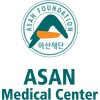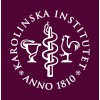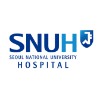
Bicarbonate in Patients With Out-of-hospital Cardiac Arrest
Cardiac ArrestMetabolic AcidosisA pilot study to evaluate the effect of sodium bicarbonate administration on cardiopulmonary resuscitation results and outcomes in cardiac arrest patient with severe metabolic acidosis.

Compression Only-CPR Versus Standard-CPR
Cardiac ArrestOut of Hospital Cardiac ArrestOut-of-hospital cardiac arrest (OHCA) is one of the leading causes of mortality in the industrialized world. Bystander CPR before arrival of the Emergency Medical Service (EMS) is a positive predictor of survival. During the last decade, the best form of bystander CPR has been debated. Chest Compression Only CPR (CO-CPR) has been advocated as a preferable method in situations where the bystander has no previous knowledge in CPR, both because its believed to be equally efficient but also a simplified form of CPR that could lead to a higher incidence of bystander-CPR. The purpose of this study is to perform av run-in period with focus on safety and feasibility prior to the launch of a larger randomized trial which has a primary end-point of survival. This study will compare OHCA with standard CPR (S-CPR; chest compressions and rescue breaths in a 30:2 fashion) compared to CO-CPR.

Effects of a New Dispatcher-Assisted Basic Life Support Training Program
Out of Hospital Cardiac ArrestDespite aggressive cardiopulmonary resuscitation (CPR) training, the outcome of cardiac arrest is not good. The problem is method of education. So, the investigators want to add the dispatcher-assisted CPR simulation into conventional CPR training. In this study, the study is aimed to investigate the effect of newer CPR training program.

Cyclosporine A in Cardiac Arrest
Non Shockable Out of Hospital Cardiac ArrestThe investigators hypothesised that cyclosporine A administration at the onset of cardiopulmonary resuscitation, by inhibiting the mitochondrial permeability transition pore, could prevent the post cardiac arrest syndrome and improve outcomes.

The Scandinavian AED and Mobile Bystander Activation Trial
Out-Of-Hospital Cardiac ArrestCardiac Arrest1 moreSudden cardiac death is a major health problem in the western world. In Europe alone nearly 300 000 patients are affected annually. The majority of victims suffering from an Out-of-Hospital Cardiac Arrest (OHCA have an initial cardiac rhythm that can be treated by means of defibrillation. In most emergency medical systems (EMS) time to defibrillation is too long and survival averages 10 %.However, when laymen operated Automated External Defibrillators (AEDs) are used within the first minutes, 7 out of 10 may survive. The aim of "The Scandinavian AED and Mobile Bystander Activation" (SAMBA) trial is to evaluate if a Mobile Phone Positioning system and a smartphone application will increase the proportions of patients with an attached Automated External Defibrillator (AED) before arrival of the Emergence Medical System (EMS). Mobile phone technology and a smartphone application will be used identify and recruit nearby CPR-trained lay people and automated external defibrillators (AEDs) to patients suffering out-of-hospital cardiac arrest (OHCA). The system is currently running in Stockholm Sweden and in the Gothenburg region.

ECPR for Refractory Out-Of-Hospital Cardiac Arrest
Cardiac ArrestHeart Arrest9 moreIn the U.S. alone, over 300,000 people per year have sudden out-of-hospital cardiac arrest (OHCA), and less than 1 out of 10 survive. The current standard practice for treating OHCA is to perform cardiopulmonary resuscitation (CPR) and Advanced Cardiovascular Life Support (ACLS) at the scene until either the heart is restarted or resuscitation efforts are considered hopeless and discontinued. An alternative strategy for those with refractory OHCA is expedited transport with ongoing mechanical CPR to an Emergency Department capable of performing extracorporeal cardiopulmonary resuscitation (ECPR). The purpose of study is to test if this strategy is feasible and beneficial.

Calcium for Out-of-Hospital Cardiac Arrest
Heart ArrestOut-Of-HospitalThis is an investigator-initiated, multicenter, randomized, placebo-controlled, parallel group, double-blind, superiority trial of calcium during adult out-of-hospital cardiac arrest. 430 adult patients with out-of-hospital cardiac arrest receiving at least one dose of adrenaline will be enrolled. The primary outcome is sustained return of spontaneous circulation and key secondary outcomes include survival at 30 days and survival at 30 days with a favorable neurological outcome.

Multifaceted Intervention for Increasing Performance of CPR by Laypersons in Out-of-hospital Cardiac...
Cardiac ArrestCardiac arrest (CA) early recognition is essential in order to rapidly activate emergency services and for bystanders to begin cardiopulmonary resuscitation (CPR). As soon as a call is received, EMS dispatchers should try to identify CA. This may be difficult, in a context of stress and distress of the person calling. Yet, it is vital for bystanders to initiate CPR. Survival can be multiplied by 2 to 4 if the bystanders initiate a CPR before the arrival of the emergency medical services. This work aim to assess a multifaceted intervention combining 3 elements to improve the initial phone recognition of CA and raise the number of patients benefiting from CPR before EMS arrival on scene. The first element is a dispatcher training to the early phone recognition of CA. This training will be based on the concept of active teaching, favouring the interactive work of learners in particular by listening to real dispatch recordings. It will be completed by continuing education with a distance teaching platform including the systematic listening of recorded CA calls. The second element is based on the deployment of a software aiming to notify CA thanks to mobile phones. This system interfaced to a control software enables to request the participation of CPR-trained volunteers automatically. The volunteers have to be located in the patient's surroundings. The deployment of this mobile application will rely on first-aid volunteers, health personal and any trained volunteers willing to participate. A randomized control study in one city area proved the efficiency of a similar software to improve the proportion of CPR by bystanders. The third element consists in a motivational feedback. A weekly overview of the management and the outcomes of patients who suffered CA will be broadcast to all the responders and volunteers in the mobile application.

Silesian Registry of Out-of-Hospital Cardiac Arrests
Out-Of-Hospital Cardiac ArrestSilesian Registry of Out-of-Hospital Cardiac Arrests (SIL-OHCA) which is an initiative of the Voivodeship Rescue Service in Katowice in cooperation with the Silesian Center for Heart Diseases in Zabrze is a prospective, population-based registry of out-of-hospital cardiac arrests (OHCA). The main aim of the SIL-OHCA is to asses the frequency of OHCA in the population of Upper Silesia and analyze prognostic factors for long-term survival in patients with OHCA.

Prophylactic Antibiotics in Comatose Survivors of Out-of-hospital Cardiac Arrest
Out-of-hospital Cardiac ArrestThe purpose of this study is to determine whether there is potential benefits of prophylactic antibiotic treatment in comatose survivors of out-of-hospital cardiac arrest (OHCA) treated in intensive care unit with therapeutic hypothermia.
